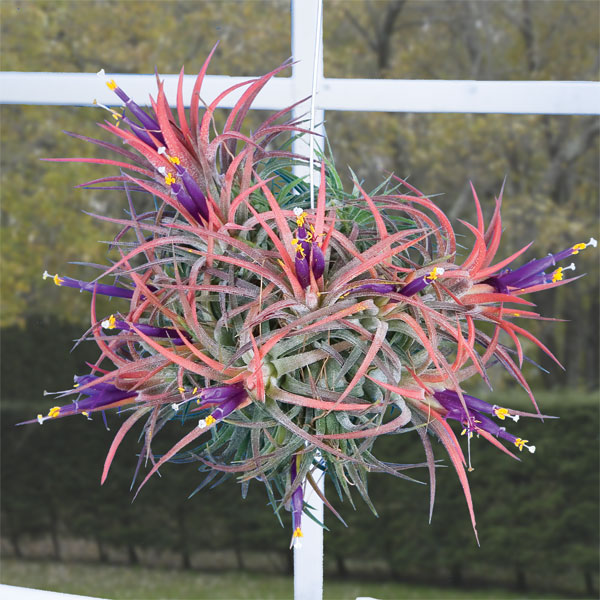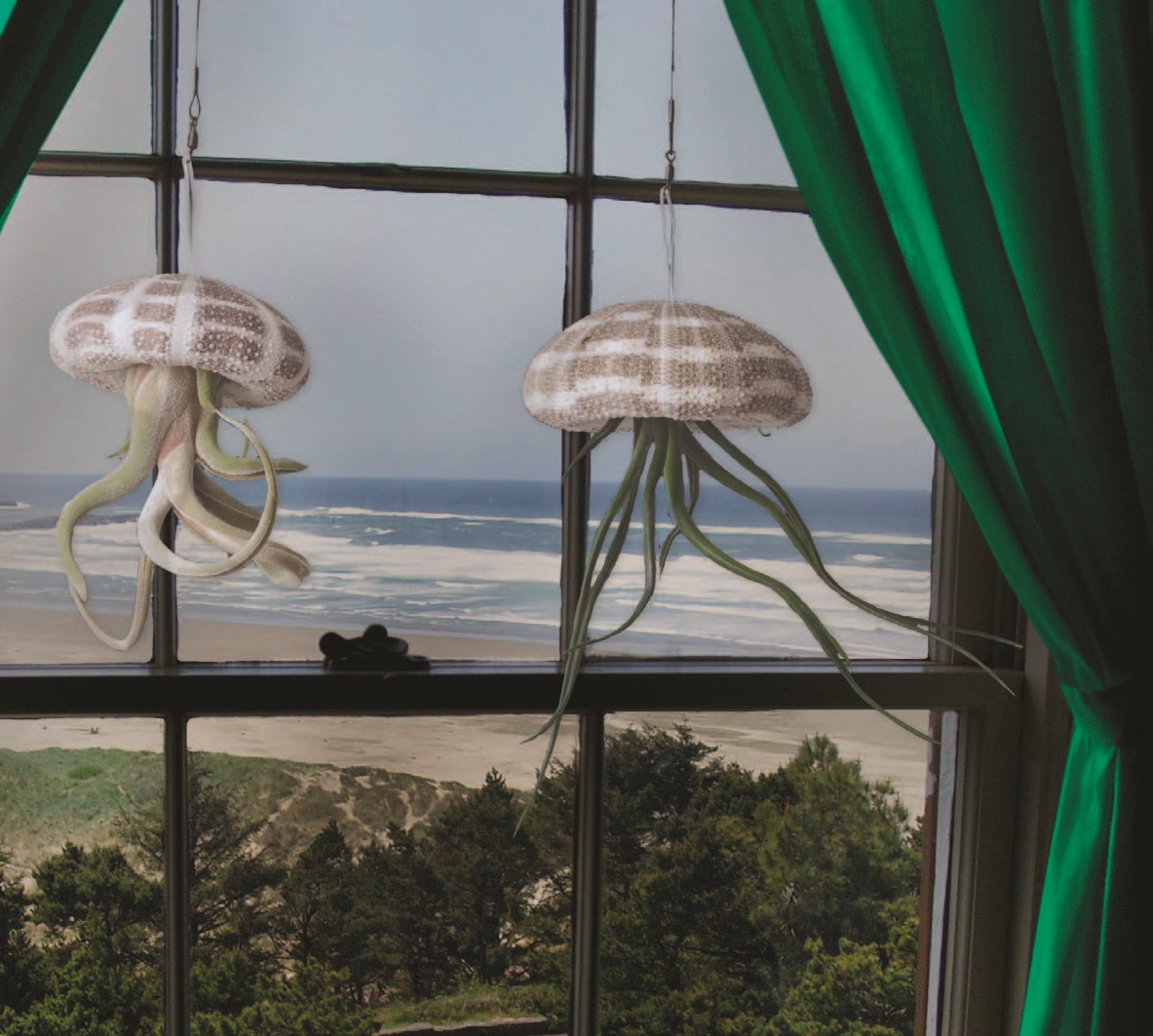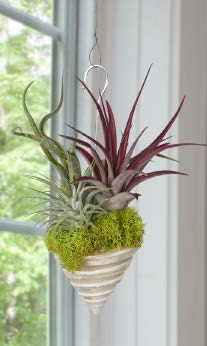
The Joy and Ease of Growing Air Plants (Tillandsias)
By Laurelynn Martin and Byron Martin
 |
| Tillandsia Ionantha Ball |
Air plants (Tillandsias), are easy to grow and add dimension, color and texture to any gardening space. With over 730 species in the Tillandsia genus, they are mostly native to Central and South America. Also known as epiphytes, tillandsias thrive without soil and attach to other plants or trees. They are in the Bromeliad family. Some grow in the desert but the ones we are focusing on are generally found in the understory of a tropical forest. Nutrients and water are absorbed through the leaves. The thin leaved tillandsias are usually in the rain forest and the thicker leaved ones grow in drier habitats. The roots, which are limited, are used to stabilize the plants on trees or other structures rather than to access water and nutrients.
Some like the Spanish moss are rootless. Spanish moss is an air plant but it is an exception to the tropical Tillandsias. Spanish moss can be grown outside in the North where temperatures dip down into the teens. With a limited root system, Spanish moss derives its nutrients and moisture from the air.
 |
| Spanish Moss |
Tillandsias come in many shapes and sizes. The plants themselves are usually made up of tough stiff leaves that form in a rosette. Some are wispy and others thin and broad. They often have a gray cast to the foliage and the plants are quite durable. They reproduce by seed or by offsets, also called pups, which is how they grow in size and reproduce. The individual plants or rosettes at maturity will produce flower spikes that emerge out of the center of the plantlet. This happens seasonally and flowers can vary from the inconspicuous to the spectacular.
On some varieties, once the flowering has taken place that growth will die and a new off shoot will continue to grow and expand, called a new pup. On others, the old flowered growth will remain as part of the viable plant as the specimen gets larger and larger. As they are epiphytes, they are usually found growing on the branches of trees where they get a good amount of light being exposed to full or partial sun. This is important in their culture and for successful growth, they do need a bright spot. For the home that has a window with some direct sunlight, this is ideal. As they gain most of their moisture from the air, they need frequent watering of the foliage.
In nature this comes from rain or dew at night or periods of high humidity. In cultivation, this is done by misting or spraying the entire plant with water. A hand spritzer works well and the plants should be misted daily or at the very least, once a week. When grown indoors in the north during the winter, more frequent misting is beneficial. With this said, they can tolerate dryness quite well. Just don’t forget about them entirely.
Light:
Partial sun, an eastern, western or northern exposure
Different types:
Tillandsias can be grown in decorative shells, like our Sea Urchin or Spiraled Shell Garden as long as they are kept in partial sun and misted frequently. Plants grown in decorative containers generally last for many months.
Temperature:
When grown indoors, be sure to keep them above 40 degrees.
Humidity:
Preferably 50% or higher: however, they will tolerate low levels of humidity for a short time. Misting plants regularly
helps to maintain higher humidity.
 |
|
Sea Urchin Tillandsias
|
 |
| Spiraled Shell Tillandsia Garden |
Watering:
Usually there is enough moisture in the air to keep these plants alive and healthy. Sowhen grown in a home environment, misting your tillandsias is all that is needed. Roots need to be freely open to the air and the leaves need to be misted or watered. Never have the roots sitting in water. Misting alone is adequate.
Fertilizer:
Tillandsias are light feeders during active growth, which means feed only once every month or every other month with a very dilute solution of a balanced fertilizer. Discontinue fertilizer in the winter.
Pruning:
The only pruning that needs to be done is cutting off old flower spikes.
Insects and Disease:
No problem unless potted in soil, then the roots will get smothered and die. Leave the roots open to the air.
We offer many different types of air plants for sale at Logee's. You can see our full selection of air plants here. Enjoy the beauty and ease of growing air plant Tillandsias!
Click here to see our Tillandsias
Last Updated: October 12, 2018

